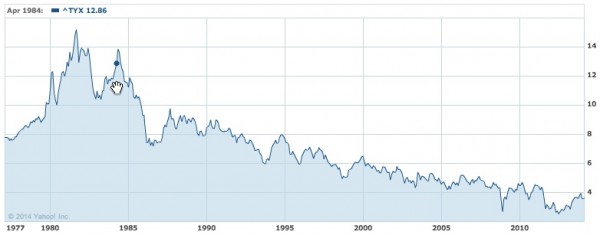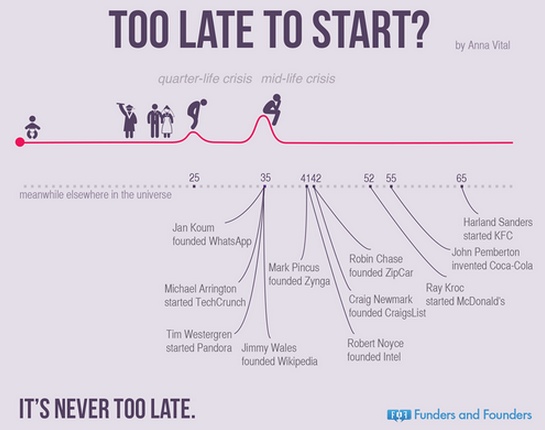Everywhere I go, everywhere I speak, I get asked this question. Are we in a bubble?
I’ve been getting asked that question for at least four years now. It’s hard to sustain a bubble for four years. But we are also not in a normal valuation environment for high growth tech companies and we have not been in one for a while.
Here’s how I have been answering the question.
I learned in business school that the multiple of earnings one should pay for a business is roughly the inverse of interest rates. The reason for that is if you buy a business that makes $10mm a year and pay $100mm for it, then you are effectively getting a yield on your investment of 10% (annual earnings/purchase price). This math is terribly simplistic but fine for the purposes of this post. If interest rates are 5% instead of 10%, then you would pay $200mm for the business ($10mm/$200mm = 5%). So the math here is interest rates = annual earnings/purchase price. Again this is very simplistic because it does not deal with the important questions of what interest rate you use, how you deal with earnings that are growing or declining, and a host of other issues. But at the end of the day, this math [annual earnings/purchase price = yield] is fundamental and everything about asset values, capital markets, and valuations stems from it.
Since the financial crisis of 2008, policy makers in the developed world have kept interest rates at or near zero. They have flooded the market with cheap money in an attempt to heal the wounds (losses) of the financial crisis and incent business owners to invest and grow their businesses. That has not worked particularly well but it has worked a bit. Though their words have changed in recent years, their actions have not changed very much. We still are in a policy framework where money is cheap and interest rates are near zero.
If you go back and apply the formula [yield = earnings/purchase price] and use zero for yield/interest rate, then one would pay an infinite amount for an earning stream. Of course that doesn’t make sense and it has not happened. But valuations are at extreme levels because you cannot get a decent return on your money doing anything else.
At some point this will change. The yield on the 30 year treasury yield has been sub 5% since the financial crisis. If (when?) it gets back to the 6-8% range where it was for most of the 1990s, we will be in a different place. Here’s a 40 year history of the 30-year treasury yield. You can see that we have been in a very low rate environment for a while now.

The other thing we have noticed is that this low rate environment has caused asset value/earnings ratios to be non-linear. What you normally see is the value/earnings ratio grows linearly with earnings growth rates. If earnings are growing 20% per year you get a value/earnings ratio of X. If earnings are growing 40% per year, you get a value/earnings ratio of 2x. But what we are seeing is you get something that looks more exponential than linear when you start modeling this out at higher earnings growth rates. When earnings growth rates get to 50-100% per year and look like they can continue to grow at that rate for a number of years, you get value/earnings ratios that are eye popping. It seems that investors are so starved for returns that they are willing to pay that much more for earnings that can grow quickly.
It is the combination of these two factors, which are really just one factor (cheap money/low rates), that is the root cause of the valuation environment we are in. And the answer to when/if it will end comes down to when/if the global economy starts growing more rapidly and sucking up the excess liquidity and policy makers start tightening up the easy money regime.
I have no idea when and if that will happen. But until it does, I believe we will continue to see eye popping EBITDA multiples for high growth tech companies. And those tech companies with eye popping EBITDA multiples will use their highly valued stock to purchase other high growth tech business and strategic assets at eye popping valuations.
It’s been a good time to be in the VC and startup business and I think it will continue to be as long as the global economy is weak and rates are low.


